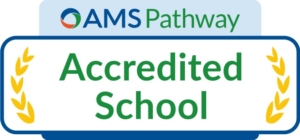Maria Montessori was, in many ways, ahead of her time. Born in 1870 in the provincial town of Chiaravalle, Italy, she was among the first female physicians in that country upon her graduation from medical school. While working originally in psychiatry, she developed an interest in education. Immersing herself in educational theory, her observations led her to analyze how children learn. She called into question the prevailing methods of teaching children with intellectual and developmental disabilities. She came to the conclusion that children build themselves from what they find in their environment.
Montessori’s desire to help children was so strong that she eventually gave up both her university chair and medical practice to work with a group of young children in the San Lorenzo district of Rome. It was there that she founded the first Casa dei Bambini, or “Children’s House.” Based upon her scientific observations of these children and their almost effortless ability to absorb knowledge from their environment as well as their tireless interest in manipulating materials, Montessori ultimately developed what became the Montessori method of education. Every piece of equipment, every exercise, every method she developed was based on what she observed children do naturally, by themselves, unassisted by adults.
“Children teach themselves.” This simple but profound truth inspired Montessori’s lifelong pursuit of educational reform, methodology, psychology, teaching and teacher training. It was all based on her dedication to furthering the self-creating process of the child.
In 1913 Montessori made her first visit to the United States just as Alexander Graham Bell and his wife Mabel founded the Montessori Educational Association at their Washington, D.C. home. Thomas Edison and Helen Keller were among her other strong American supporters. In 1915, she attracted world attention with her “glass house” schoolroom exhibit at the Panama-Pacific International Exhibition in San Francisco. On this second U.S. visit, she also conducted a teacher training course and addressed the annual conventions of both the National Education Association and the International Kindergarten Union.
Maria Montessori went on to offer various training courses around the world, in places like London, the Netherlands and India. In 1922 she was appointed as a government inspector of schools in her native Italy, but, due to her opposition to Mussolini’s fascism, was forced to leave Italy in 1934. Montessori was nominated for the Nobel Peace Prize in 1949, 1950 and 1951. She died in Noordwijk, Holland in 1952. Her legacy lives on through the Association Montessori Internationale (AMI) which she founded in Amsterdam in 1929.
